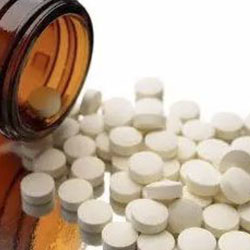
How long is the shelf life of commonly used disinfection supplies? In response to the concerns of the public, Tian Liang, the chief physician of the Institute of Infectious Diseases Prevention and Control and the Department of Disinfection and Infection Control of the Shanghai Center for Disease Control and Prevention, gave specific answers at the 157th press conference on the prevention and control of COVID-19 in Shanghai held on the 18th.
Tian Liang said that people should follow five principles when carrying out disinfection at home and office. First, adhere to the principle of cleaning first and disinfection second. In general, it is necessary to do a good job in environmental cleaning, and carry out disinfection for links and objects with real risks. Disinfection should be carried out on the premise of completing cleaning. Second, adhere to the principle of giving priority to physical methods, supplemented by chemical methods. Give priority to disinfection methods such as window opening and ventilation, mechanical ventilation, heating and boiling, sun exposure, etc. Third, adhere to the principle of combining preventive disinfection with disinfection at any time. People should disinfect all kinds of articles, elevators, handrails, toilets, etc. 1-2 times a day. In case of pollution, disinfection shall be carried out at any time and hands shall be kept clean at any time. Fourth, adhere to the principle of consistency between disinfection intensity and risk. If the objects are frequently contacted, the disinfection frequency can be higher, and the disinfection concentration of seriously polluted objects should be appropriately increased, and the disinfection time should be appropriately extended. Fifth, when disinfection is carried out, personal protection should be done well, not only to prevent pathogen infection, but also to pay attention to the stimulation and damage of disinfectant to people.
Disinfection methods for different objects
1. Indoor air. Open windows for ventilation at regular intervals every day to maintain indoor air circulation. If natural ventilation conditions are not available, exhaust fans can be used for mechanical ventilation. The room shall be ventilated by opening the window at least once every morning and afternoon for more than 30 minutes each time.
2. Object surface. Keep the indoor environment and articles clean and tidy. When there are pollutants on the surfaces of tables, chairs, furniture, kitchens, bathroom countertops, door handles, faucets and other objects, the pollutants shall be cleaned first, and then the 500mg/L chlorine containing disinfectant shall be used to wipe and disinfect for 30 minutes, and then the clean water shall be used to wipe and disinfect, or the disinfectant wipes or other disinfectants that can be used for disinfection of object surfaces shall be used to wipe and disinfect. Small items such as mobile phones, remote controls, computer keyboards, and mice can be wiped and disinfected with alcohol wipes.
3. Surfaces such as the ground and possibly polluted walls. If there are pollutants, they should be completely cleaned before disinfection. 500mg/L of chlorine containing disinfectant can be used to wipe or spray for disinfection. The disinfection time should not be less than 30 minutes.
4. Meals (drinks). Clean first and then sterilize. Boil sterilization is preferred for 15 minutes, or soak in 250-500mg/L chlorine containing disinfectant for 15 minutes, and then rinse with clean water.
5. Clothes, bedding, towels and other textiles. You can choose to boil for disinfection for 15 minutes or use heated water for washing, and keep it above 56 ℃ for 30 minutes. You can also use 1000mg/L quaternary ammonium salt disinfectant or other clothing disinfectant to soak it for 30 minutes, and then clean it as usual. For fabrics that cannot be washed, they can stand at room temperature for 5-7 days.
6. Sanitary appliances such as mops and dusters. It shall be used in a special area to avoid crossing. After use, it shall be soaked and sterilized with 500~1000mg/L chlorine containing disinfectant. After 30 minutes of use, it shall be washed with clean water, dried and stored for standby.
7. Toilet. The windows shall be opened regularly for ventilation to maintain the indoor air circulation. If there is no natural ventilation condition, the exhaust fan can be used for mechanical ventilation. The toilet seat cushion and its surroundings shall be wiped and disinfected with 1000mg/L disinfectant containing effective chlorine. The toilet door handle, faucet, hand washing table top, flush button and other parts frequently touched by hands can be wiped and disinfected with disinfectant wipes or 500mg/L disinfectant containing effective chlorine. After 30 minutes of use, clean them with clean water.
8. Refrigerator and frozen food. Clean the inside of the refrigerator and wipe the outside wall every day. The food in the refrigerator should be cooked thoroughly before eating. Wash hands before and after handling food. It is recommended to wipe and disinfect the refrigerator with 75% alcohol or disinfectant wipes after the temperature returns to normal temperature.
9. Domestic garbage. Garbage should be collected and cleaned in a timely manner. It is recommended that 75% alcohol or 500mg/L-1000mg/L chlorine containing disinfectant should be sprayed first. After being tightly bound with double plastic bags, the outer surface of the garbage bags should be sprayed with chlorine containing disinfectant containing 500mg/L-1000mg/L effective chlorine, and then transported to the garbage dropping point.
10. Other items. For other items that are not suitable for disinfection, such as books and valuables, they can be sealed and left at room temperature for 5-7 days.
(2) Precautions related to disinfection
1. Disinfectant should be prepared on the spot. Take a certain chlorine containing disinfectant with effective chlorine content marked as 5% as an example: when preparing 500mg/L, take one disinfectant and add 99 parts of water to mix evenly; When preparing 1000mg/L, take 1 part of disinfectant and add 49 parts of water, and mix well.
2. Chlorine containing disinfectant is irritant and corrosive to a certain extent. When preparing and using, pay attention to personal protection, such as wearing masks and gloves, and prevent splashing eyes. When using, wipe or rinse with clean water after reaching the disinfection time to prevent damage to articles.
3. Disinfectants should be used alone and not mixed with other chemical ingredients. Before use, carefully read the instructions of disinfection products, and use them correctly in strict accordance with the scope of use, method of use, concentration of action, and time of action specified in the instructions.
4. Home disinfection should be scientific and standardized to avoid over disinfection. Disinfectants should not be directly used to disinfect human bodies. UV lamps or chemical disinfectants should not be used to spray indoor air under manned conditions. Alcohol should not be used to disinfect the air. Generally, large-scale disinfection is not allowed.
5. Disinfectants should be stored in a cool and dark place to avoid children's touch.
Special population
children
24. When children have fever, it is recommended to use paracetamol for children aged 2 to 6 months, and paracetamol or ibuprofen can be used for children aged over 6 months. It is not recommended to use antipyretics for children under 2 months of age who have fever. They should seek medical advice or consult a doctor in time.
25. If you want to give children cold medicine, especially compound cold medicine, you must know whether the ingredients of the medicine coincide with those of other medicines used at the same time, so as to avoid damage to children caused by excessive use.
26. The child's organ function is not perfect, so the medication should be standardized and cautious, follow the doctor's advice, and carefully read the instructions.
aged
27. If the blood oxygen saturation is less than 93%, seek medical advice in time.
28. Elderly people with chronic underlying diseases should not stop taking chronic disease treatment drugs for a long time after they are infected with COVID-19, so as to ensure the stability of underlying diseases.
Maternal
29. The current evidence does not support that COVID-19 can cause vertical transmission between mother and fetus. If a pregnant woman is infected with COVID-19, she may suffer from pneumonia, hypoxia and other symptoms due to persistent high fever.
30. The current evidence does not support that COVID-19 can be transmitted through breast milk. For pregnant women infected with COVID-19 or vaccinated with COVID-19 vaccine for a long time, the specific antibody of COVID-19 in breast milk is high, and breast feeding has a protective effect on newborns. For the pregnant women who are still infected with COVID-19 during the infection period, it is recommended to squeeze out breast milk and let others breastfeed at intervals.
Shanghai Fangxing Machinery Equipment Manufacturing Co., Ltd., whose products include Several grain packaging machine , Granulator , Bag type multi grain packaging machine Professional granulator manufacturer. The number of grain packaging machines is sufficient in stock, which can stably transport the number of grain packaging machines and various kinds of grain packaging equipment for various pharmaceutical enterprises. Contribute to the epidemic!





